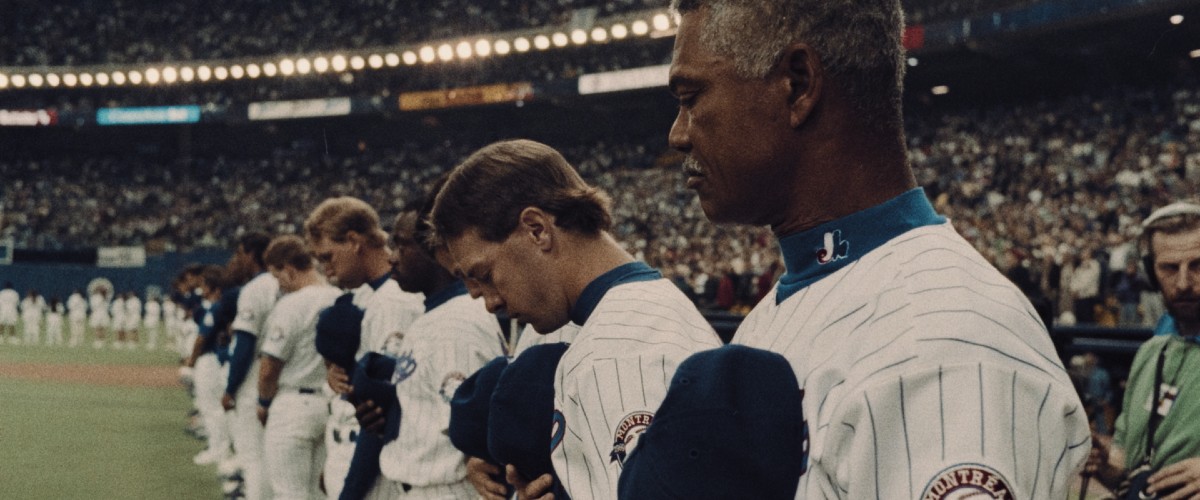Jean-François Poisson’s Netflix documentary “Who Killed the Montreal Expos?” delves into the heartbreaking story of the Montreal Expos’ demise. The film explores the various factors that contributed to the team’s downfall, from financial struggles to boardroom conflicts, leaving fans heartbroken. This review will analyze the documentary’s strengths and weaknesses, its focus on the business side of baseball, and its emotional impact on those who remember the Expos.
The documentary examines the key players and events that led to the team’s departure from Montreal. Poisson interviews former owners, players, journalists, and even the team’s beloved mascot, Youppi!, to piece together the complex narrative. The film highlights the financial challenges faced by the Expos, the boardroom backstabbing, and the failed attempts to secure a new stadium. Ultimately, “Who Killed the Montreal Expos?” serves as a poignant reminder of the passion and heartbreak that sports can evoke.
The Early Struggles of the Montreal Expos
Founded in 1968 by Charles Bronfman, the Montreal Expos faced an uphill battle from the start. As MLB’s first professional international team, they encountered numerous challenges in building a winning franchise. The difficulties intensified in the 1980s as player salaries soared, television contracts exploded, and the value of the Canadian dollar plummeted. This financial strain made it increasingly difficult for the Expos to compete with other teams in the league. Bronfman eventually entrusted the team’s president, Claude Brochu, with the task of selling the franchise while hoping to keep it in Montreal.
Brochu devised an innovative plan to form an investment group composed of 14 Canadian corporations, with himself as the primary decision-maker. However, this arrangement caused friction among the co-owners. Despite these challenges, the Expos, under manager Felipe Alou and with stars like Pedro Martinez and Larry Walker, became the best team in baseball by 1994. Unfortunately, their World Series dreams were abruptly shattered by the strike.
The Business of Baseball: A Primary Villain
Poisson identifies the business of baseball as the primary villain in the Expos’ demise. The documentary highlights the boardroom backstabbing between Brochu and the other owners, the failed attempts to secure public funding for a new stadium, and the arrival of Jeffrey Loria and David Samson, who proved to be detrimental to the team. Tom Verducci, a reporter, provides valuable insights into the written and unwritten rules of team ownership, while Alou and Orlando Cabrera candidly discuss the shortcomings of those in power.
Samson’s gregarious nature is contrasted with the toxic atmosphere within the organization, as described by Cabrera. Through these voices, the film paints a comprehensive picture of the factors that contributed to the team’s downfall. The film underscores how baseball is not just a game on the field but also a complex business with significant financial implications.
Shortcomings of the Documentary
One of the main criticisms of “Who Killed the Montreal Expos?” is its length. At just 90 minutes, the documentary feels too short to fully explore all aspects of the team’s history. Poisson omits important details, such as the Expos’ time playing at Olympic Stadium and their 22 games in Puerto Rico in 2002. Additionally, while the film focuses on the business side of baseball, it lacks in-depth coverage of the players and their experiences.
For example, the Expos had an exceptional minor league system, drafting future Hall of Famers like Andre Dawson, Gary Carter, Tim Raines, Randy Johnson, and Vladimir Guerrero. The documentary doesn’t delve into how this remarkable drafting record was achieved. Despite these shortcomings, “Who Killed the Montreal Expos?” succeeds in capturing the emotional impact of the team’s departure on its fans.
The Fans: The Heart of the Story
The documentary shines when it focuses on the fans. The footage of the final Expos home game on September 29, 2004, is particularly moving, with images of crying fans and reporters conveying the deep sense of loss. For these fans, baseball is more than just a game; it’s a part of their identity and their connection to the city. The memories of attending games with family and friends are intertwined with their sense of community.
The film poignantly illustrates how the loss of the Expos left a void in the lives of these fans. Baseball represents life when it’s around and death when it’s gone. By the end of the documentary, viewers are left with a sense of hope that baseball will one day return to Montreal, bringing joy back to those who continue to yearn for their beloved team.
Final Thoughts: A Call for Baseball’s Return
“Who Killed the Montreal Expos?” is a compelling documentary that explores the complex factors behind the Montreal Expos’ demise. While it may have some shortcomings in terms of length and player-focused content, it excels in capturing the emotional impact on the fans. The film serves as a reminder of the passion and heartbreak that sports can evoke, and it raises important questions about the business of baseball. Ultimately, it is a tribute to the fans who continue to hope for the return of their team.
The documentary leaves viewers with a sense of hope that one day spring will smile kindly once more on those still praying for the return of their darling team. The story of the Montreal Expos is a cautionary tale about the importance of community, financial stability, and passionate ownership in the world of professional sports. The legacy of the Expos lives on in the hearts of their fans, who continue to cherish the memories of the team and dream of a future where baseball returns to Montreal.

Leave a Reply